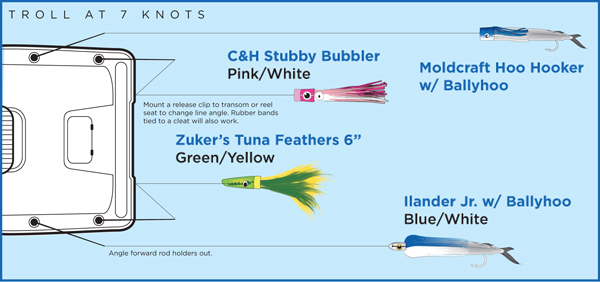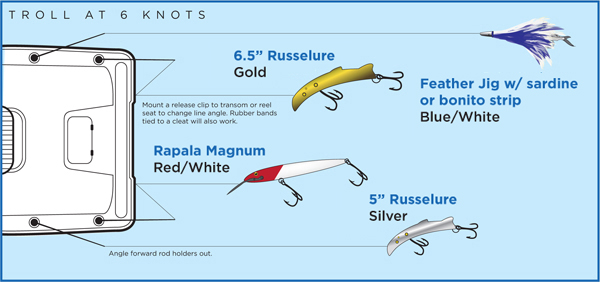
Normally, when we hear those words, it’s not a good thing, but in this case, it’s about as good as it gets.
Summer heat has set in and sunshine is abundant on the upper Texas coast. Our seasonal crops of shrimp and crabs have reached their summer destinations of back marshes and shallow shorelines, where they will spend the warmer months growing to maturity. Other seasonal visitors, like glass minnows, ballyhoo, pinfish and numerous others, are settled in along the shallow shorelines and back bay areas.
As we already know, these animals tend to gravitate towards areas rich in their primary food source, decaying vegetation. On the heels, or rather the tails, of these smaller animals are the predatory army of redfish and others that thrive on these prevalent food sources and the relative shelter of shallow water.
Not only does the abundance of small baitfish and crustaceans in the shallows make life easy for the fish, but equally, it makes life easier for us as anglers. Typically, with this greater source of prey species, predators will be equally abundant. The sheer numbers of both prey and predator make for the foundation of great fishing. I’ve always been a firm believer in locating abundant food sources, since predators will rarely inhabit an area where they cannot feed readily and easily. Fishing areas lacking in food sources for the predators we seek, typically result in very poor catches.
So, as we find these areas rich in both prey and predator, it’s easy to see our catch percentages increase. Many times this is due to the visibility of the fish that we seek, especially in the case of redfish. Redfish often feed in a very aggressive manner, making themselves visible as they “crash” baitfish and shrimp along shorelines. When redfish feed more aggressively, and we as anglers can more readily determine where they are, it becomes much easier to present a lure or fly correctly.

Mike Attis picked off this red from tailing school.
Cast Placement: Fly vs. Lure
There is always a “bite window” for every species. It varies with water conditions and the size of the offering we present to a fish. For the sake of retaining our sanity, let’s stick to a fairly predictable species, like redfish for this discussion.
The food source that redfish are feeding on plays a huge role in the size of our “bite window.” If they are feeding predominantly on 1-2-inch-long shrimp, they will typically not be in the mode of moving far off course to eat the next morsel. We see this commonly while fishing shallow grass flats and back marsh waters in the summer and fall.
The fly, which is similar in size, needs to be within a 1-2-foot radius area, in front of and at nearly the same depth as the head of the redfish. Flies don’t move much water and they don’t typically rattle or have other factors that help redfish hone in on their whereabouts.
On the other hand, if we are casting with conventional gear and fishing a slightly larger soft plastic or spoon, the presentation window may be increased slightly due to the larger profile and greater vibration of these lures moving through the water. This tends to make nearby redfish more aware of the lure’s presence. The downside is when casting to the fish, more caution must be used.
A well presented fly can typically be cast within two feet of a redfish without spooking the fish. Try this same cast with a 1/8th ounce jig and plastic combination or 1/4th ounce weedless spoon, and you will find yourself watching lots of spooked fish swim away unhooked.

Alisha Soule with a 31-inch marsh red.
Shallow Water and Sight Casting Situations
In water with greater clarity or visibility, fish will become somewhat more spooky and require more “lead” or distance from the fish when making your cast. In dirty water, we may be able to cast a weighted lure like the spoon within two feet of the sighted fish. In clear water, we often have to cast five or six feet beyond and ahead of the fish and retrieve it back to a crossing position to find success.
Flies excel in clear water, as most are unweighted or weighted so lightly that they can be presented gently within a very close proximity to the fish without scaring them. Lures, with their larger profile and vibration emitting qualities, will excel in dirty water because they tend to help fish locate the offering. Clear water, especially during periods of light wind, can complicate this even more by making it more difficult to get within casting range of the fish.
As a general rule, I tell anglers that with a fly and a slow moving fish, the cast should both lead the path of the fish, and go beyond the fish’s current location by a two-to-three-foot margin. This allows the angler time to start a retrieve and adjust speed as necessary to bring the fly across the path of the fish. In the case of lightweight lures during sight casting situations, this cast often must be increased to as much as five feet of lead space to prevent spooking a fish.
Keep in mind that the closer you are to presenting an offering at a perpendicular angle, the better your chances are of convincing the fish it’s worth eating. Don’t ever present a lure at a closing angle, or one where the lure or fly is coming head on at a predatory fish. This will scare even very large and aggressive predators like sharks.
Predators aren’t brilliant, but they do know from experience that small prey animals never swim directly to their mouth. If you present your lure of fly in a way that crosses effectively through their bite or feeding window, and then proceeds to move away, you will likely be rewarded with bites at a much higher rate.

Kristen Soule with a school size red.
Schooling Redfish
When the heat is really turned up and the shrimp and crabs crops are at their peak, significant schooling will begin. Redfish primarily school in shallow water when feeding on one of these two types of crustaceans. We mostly see them grouped up and chasing shrimp, but there are times when they are schooled and feeding on crabs. When feeding on shrimp, reds tend to be fairly aggressive and visibly moving along flats and down shoreline. On the grass, you will usually see them tailing in groups but moving along at a slow pace. This movement is typically punctuated by an occasional pop or fast movement by some of the fish within the school.
When feeding on crabs in schools, the reds tend to move along much more slowly and are sometimes easily spotted by the muds they create while rooting in the substrate. There is a distinct difference on how they feed on each species.
Schooling fish make our lives as anglers eminently easier! There is safety in numbers and there is also an inherent competitive nature when predators feed in groups. As competitive feeding heightens, fish tend to not only become less aware of what is around them, but also they tend to charge down close meals with reckless abandon. We can get closer to them, as well as make casts much closer without spooking the fish. It is equally important to note that there is an obvious increase in the likelihood that our offering will get eaten when casting to a school of 10-20 fish, versus casting at a single fish. When casting to schooling fish with a fly, the need to lead the fish is almost completely eliminated and with conventional gear, offerings can be cast at a much closer range.
Aggressive schooling behavior on the Upper Texas Coast will be present throughout the summer and into the fall until the majority of the shrimp and crabs leave the shallow waters for winter. If you are ready for a whole new level of fun in your fishing, don’t miss out on Summer School.


















 Proven dorado colors are blue/white, pink/white and green/yellow. Change your spread to the colors they are hitting the hardest. Feather jigs,
Proven dorado colors are blue/white, pink/white and green/yellow. Change your spread to the colors they are hitting the hardest. Feather jigs, 
 Kingfish are abundant in the Gulf and will strike baits with unbridled aggression and speed. Gold and silver
Kingfish are abundant in the Gulf and will strike baits with unbridled aggression and speed. Gold and silver 






 A
A






 Five Trout and Redfish Lures for Fishing the Lights
Five Trout and Redfish Lures for Fishing the Lights








 In the latter half of the 19th century, oyster shell became a construction material and was commercially harvested. In the first half of the 20th century, oyster shell became an industrial commodity and shell dredging intensified. Millions of cubic yards of oyster shell were removed from the bay, some of it from living reefs. This practice, which greatly reduced the area covered by oyster reef habitat, was prohibited in 1969.
In the latter half of the 19th century, oyster shell became a construction material and was commercially harvested. In the first half of the 20th century, oyster shell became an industrial commodity and shell dredging intensified. Millions of cubic yards of oyster shell were removed from the bay, some of it from living reefs. This practice, which greatly reduced the area covered by oyster reef habitat, was prohibited in 1969.




 A good wading belt with pliers and a bait compartment is needed.
A good wading belt with pliers and a bait compartment is needed.









